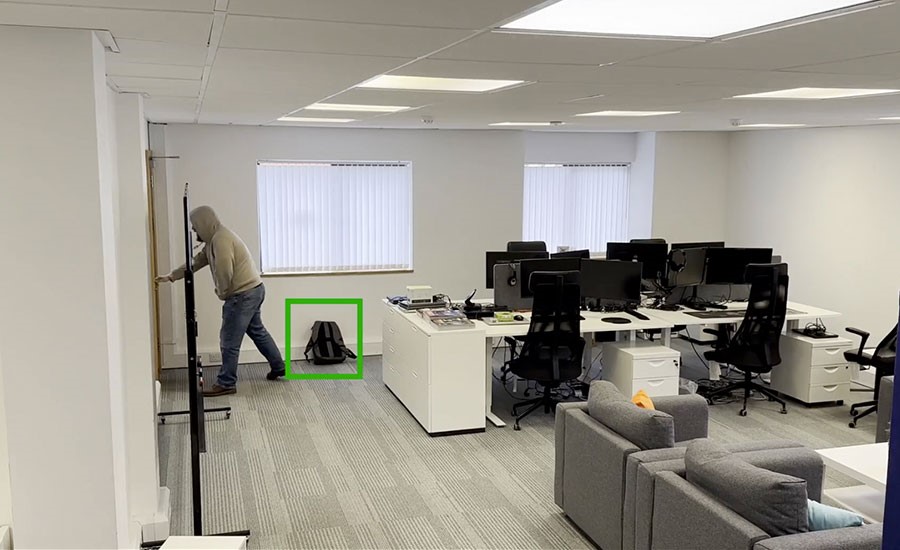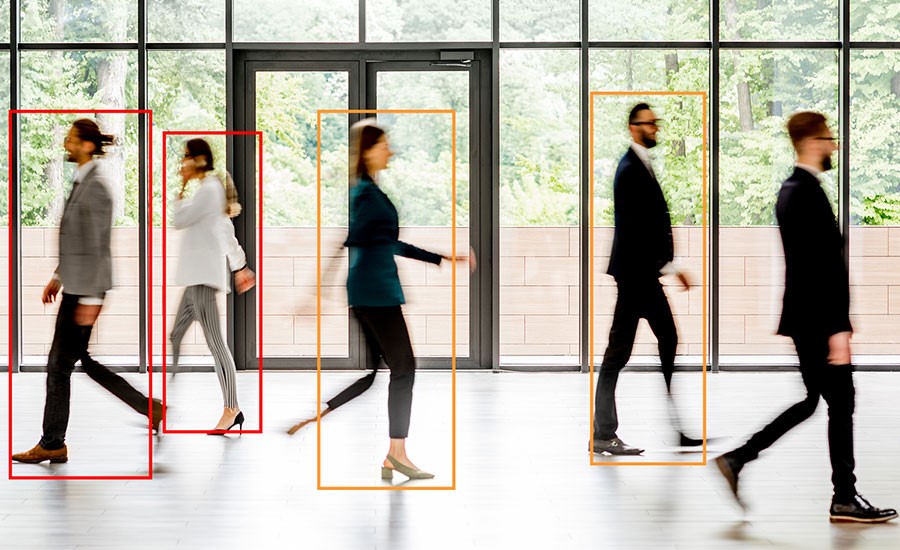
The Evolution of Automation in the Command Center
Transforming security operations: UL Standards to AI
The command center has undergone a remarkable transformation over the past several decades, evolving from stations that primarily monitored burglary alarms into sophisticated hubs of security intelligence. This evolution represents more than technological advancement—it reflects a fundamental shift in how organizations approach security operations. From the earliest UL-standardized automation platforms that digitized alarm responses to today's AI-powered virtual operators capable of autonomous decision-making, each evolutionary stage has redefined what's possible in security monitoring. As we examine this journey from UL standards to AI, we uncover not just the history of command center technology, but a roadmap to its future.
The earliest automation platforms were developed to receive digital alarms from UL alarm receivers and automate the response process for central stations and command centers. They earned the name "automation platforms" because they transformed a previously manual and time-consuming process of responding to alarms into an automated system that greatly minimized response delays. These systems were capable of receiving and decoding complex strings of text and numbers that described the type of alarm triggered, the zone that was tripped, and the location (account) from which it was raised. Making it even more complex, these alarm messages came in various formats depending on the system that sent the message (ContactID, SIA, Moose Panels, etc.), each with its own unique formatting. What made these platforms truly revolutionary was their ability to automate the receipt of these alarms and instantly associate them with the correct account that contained all the information responding operators needed to notify the customer and first responders immediately.
As these platforms managed life safety events, the UL standards group developed a specific standard, UL 1981, to regulate the operation of these automation platforms.
“UL 1981 establishes the standards for central station automation systems, focusing on the integration, performance, and reliability of automated monitoring and control systems used in security applications. It emphasizes robust communication and system redundancy. This standard applies to automation systems that centralize monitoring functions for a range of security applications, including burglar alarms, fire detection, and other emergency response systems. It covers both hardware and software components.” https://www.intertek.com/life-safety-security/standards/ul-1981/
This is what platforms such as Mastermind, Bold, Microkey, and others were developed for.
In addition to the technical requirements for integration and system redundancy, the true strength of this standard lies in its development of comprehensive industry guidelines for alarm management. The standard defines how alarms should be presented to operators, how priorities should be assigned and managed, visual and audible cues for alarm conditions, auditing and reporting requirements, IT security, and session management, just to name a few. In short, UL 1981 outlines everything needed to consistently and reliably monitor any alarms. Although this standard was originally designed for UL-generated alarms, these alarm management standards apply to the response to any alarm. That's why we adopted this standard for our response platform early on; it ensured we adhered to the industry's best practices and certification for alarm management. These UL requirements are “baked in” to the core of our platform—it's how we handle every alarm, whether it's a UL alarm, an alarm from video analytics, access control, or travelers impacted by a natural disaster.

The next major leap in automation came with the proliferation of alarms generated by video systems. Cameras provided new ways to monitor high-risk environments such as critical infrastructure, large warehouses, shipping and loading docks, parking lots, and more. Early video motion detection technologies generated excessive false positives, rendering them impractical for large-scale monitoring. This led to the development of advanced video analytics, allowing systems to accurately detect people and objects, even in challenging weather and lighting conditions. This fundamentally expanded monitoring practices by removing limitations posed by passive infrared sensors (PIRs) and indoor alarms, enabling observation of various outdoor areas. By eliminating the majority of false positive events, monitoring stations could respond to these incidents just like they responded to a UL digital alarm. However, the technology required to process these types of events is quite different; it involves receiving alarms in new formats such as SMTP, HTTP, via APIs; processing video clips in formats ranging from JPEGs to movie files; and streaming live video feeds using various technologies such as RTSP, H.264, HTTP, ONVIF, and a variety of SDKs. Automation platforms, like Immix (previously a SureView company), were developed to provide a rich video-centric interface for operators that seamlessly integrated with a wide variety of these systems. Operators no longer had to jump back and forth between different video systems, eliminating the inconsistency and costs associated with monitoring a diverse set of systems. The management of these alarms still adhered to the fundamental principles established by UL 1981, but the technology and interface were radically more sophisticated. For operators in the SOC, they could now consistently and reliably monitor any alarms, regardless of which video or systems triggered the events.
The next major evolutionary step impacting automation in the SOC did not come from monitoring alarms and systems, but rather from how these platforms themselves were maintained and delivered—automating the IT component of SOC operations. Previously, monitoring software was deployed to on-premise servers purchased and maintained by the organization—a costly and complicated process. With the availability and reliability of commercial cloud services like AWS and Azure, organizations began to migrate their on-premise systems to the cloud. Simply relocating software to a hosted environment is not a true innovation—it’s merely moving a system from one data center to another. The true revolution came with the emergence of Software-as-a-Service (SaaS) models. SaaS delivery eliminates the need and costs associated with managing in-house systems—teams simply sign up and start using the software. We made the strategic decision to invest heavily in building our platform as a SaaS, embracing the latest cloud-based technologies. It wasn't an easy decision to make at the time, as many organizations were still buying and deploying on-premise servers. However, it was obvious to us that the direction of travel was for organizations to seek ways to eliminate the cost of managing IT infrastructure and benefit from the infinite scalability of the cloud. It also enables us to leverage a range of cloud services to deliver greater automation to our customers. Today, we offer our customers the option of utilizing our SaaS or, to deploy the platform on-premise in highly restricted network environments.

In the last 12 months, the rise of artificial intelligence has arguably become the #1 topic across all industries—and for good reason! We believe the impact of AI will make previous milestones look pedestrian in comparison. AI will have profound effects on all parts of an operation, from data analysis to threat detection and data correlation. Bringing it back to today's topics, its capability to automate many time-consuming operational tasks is likely to have the most immediate impact. At SureView, we have focused our initial efforts on developing a Virtual Operator that uses Generative AI to manage every aspect of responding to an event.
As events are received into SureView, a Virtual Operator can be configured to:
- Pick up the event from the queue and immediately analyze the alarm details, the location, and the time of the event
- Analyze incoming alarm footage and livestreams, detecting people and vehicles while also describing what it observed
- Follow and complete Action Plans - answering questions, adding notes, etc.
- Dispatch onsite security personnel or emergency responders
- Summarize and close events
At any stage of this process, the Virtual Operator can be configured to escalate the event to a human operator for further investigation and response. Administrative guidelines allow SOC managers to control how they want the Virtual Operator to behave in different scenarios. For example, if a person is seen in the alarm clip, the Virtual Operator can be configured to summarize what it observed and immediately escalate it to a human operator to take further action. If nothing is seen in the alarm clip or live video, the Virtual Operator can be directed to complete the action plan and close the event without any operator interaction. The Virtual Operator can be manually controlled by SOC managers, allowing them to turn it on or off as needed. Alternatively, it can be configured to auto-scale as response times lengthen during peaks in alarm traffic. This space is rapidly changing; not only are the AI models evolving almost daily, but new companies are also emerging at a swift pace. Against this backdrop, we made the strategic decision to develop our AI capabilities using a plug-in approach, similar to how we integrate with various security systems, allowing customers to choose the model that is best for them—or even bring their own model!

As we look to the future of command center operations, the trajectory of automation is clear. From the earliest UL-compliant platforms that standardized alarm response, to video-centric interfaces that expanded monitoring capabilities, and now to AI-powered Virtual Operators, each evolutionary step has fundamentally transformed how security operations function. These advances have consistently pursued the same goal: reducing manual workload while improving response effectiveness. Today's AI-driven solutions represent not just another incremental improvement, but a paradigm shift in what's possible. Organizations that embrace these technologies will find themselves with more resilient, scalable, and intelligent command centers—ones where human operators focus on complex decision-making while automation handles routine tasks. The command centers of tomorrow won't simply be more efficient; they will be fundamentally reimagined, creating new possibilities for security operations that we are only beginning to explore.